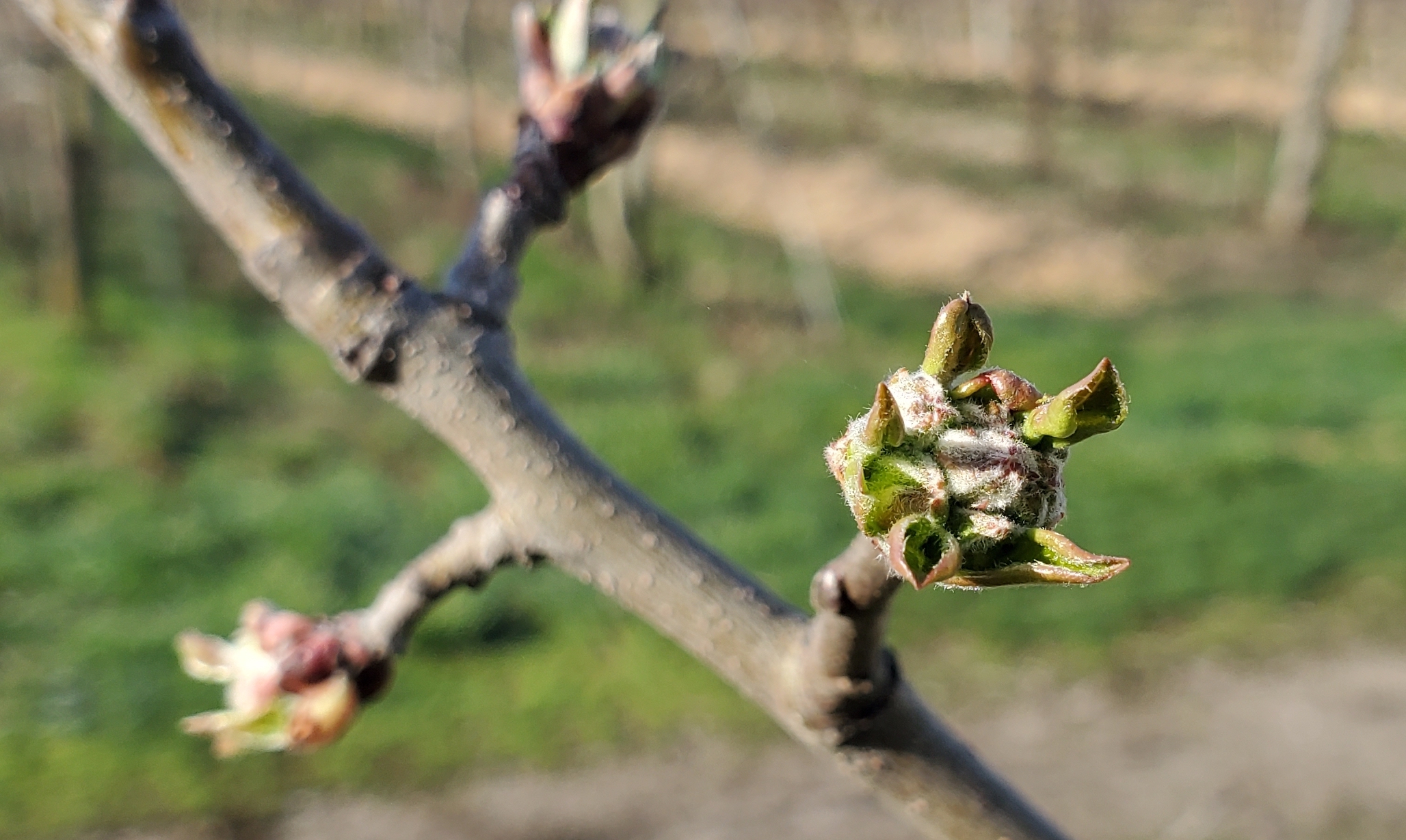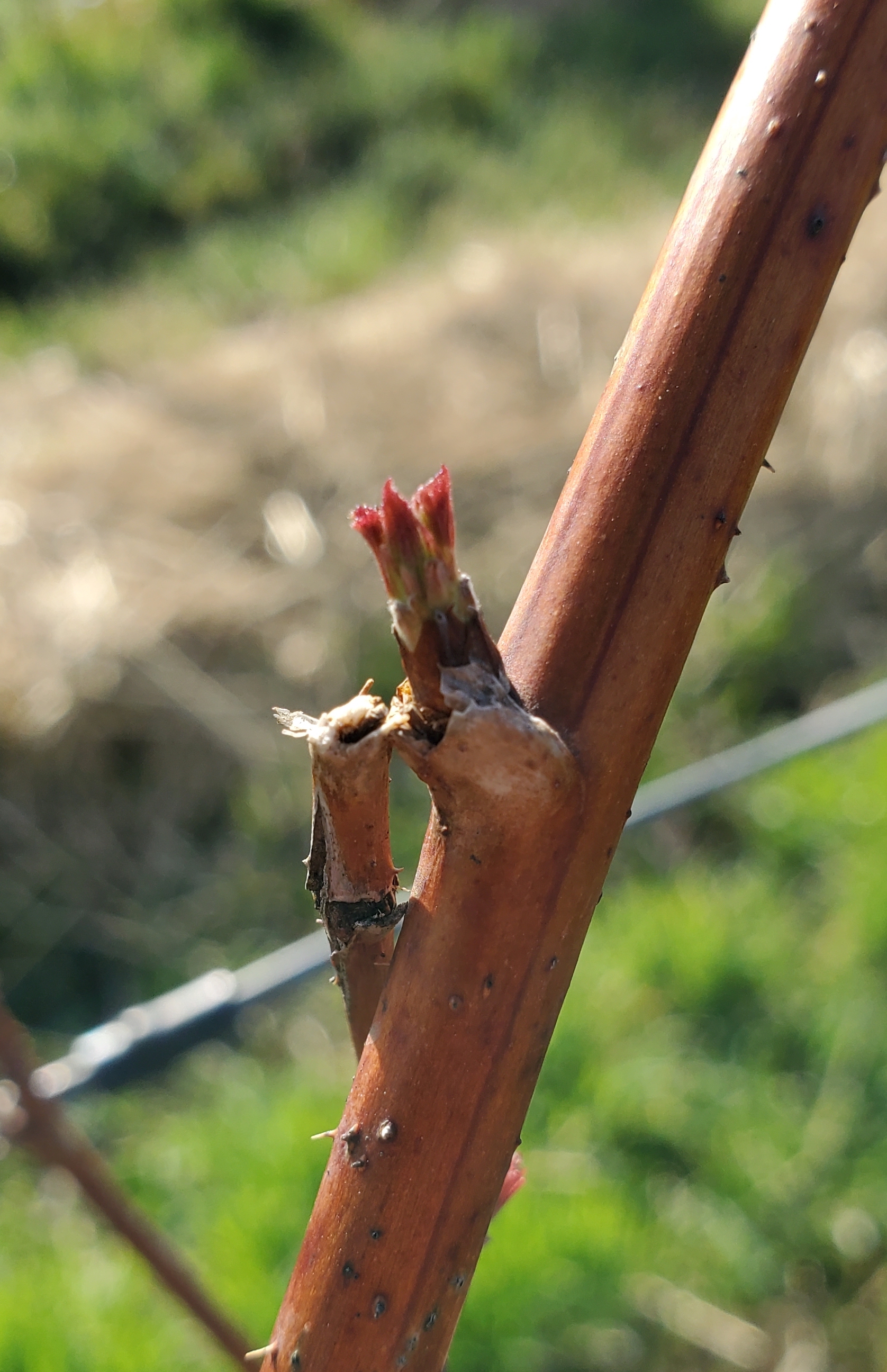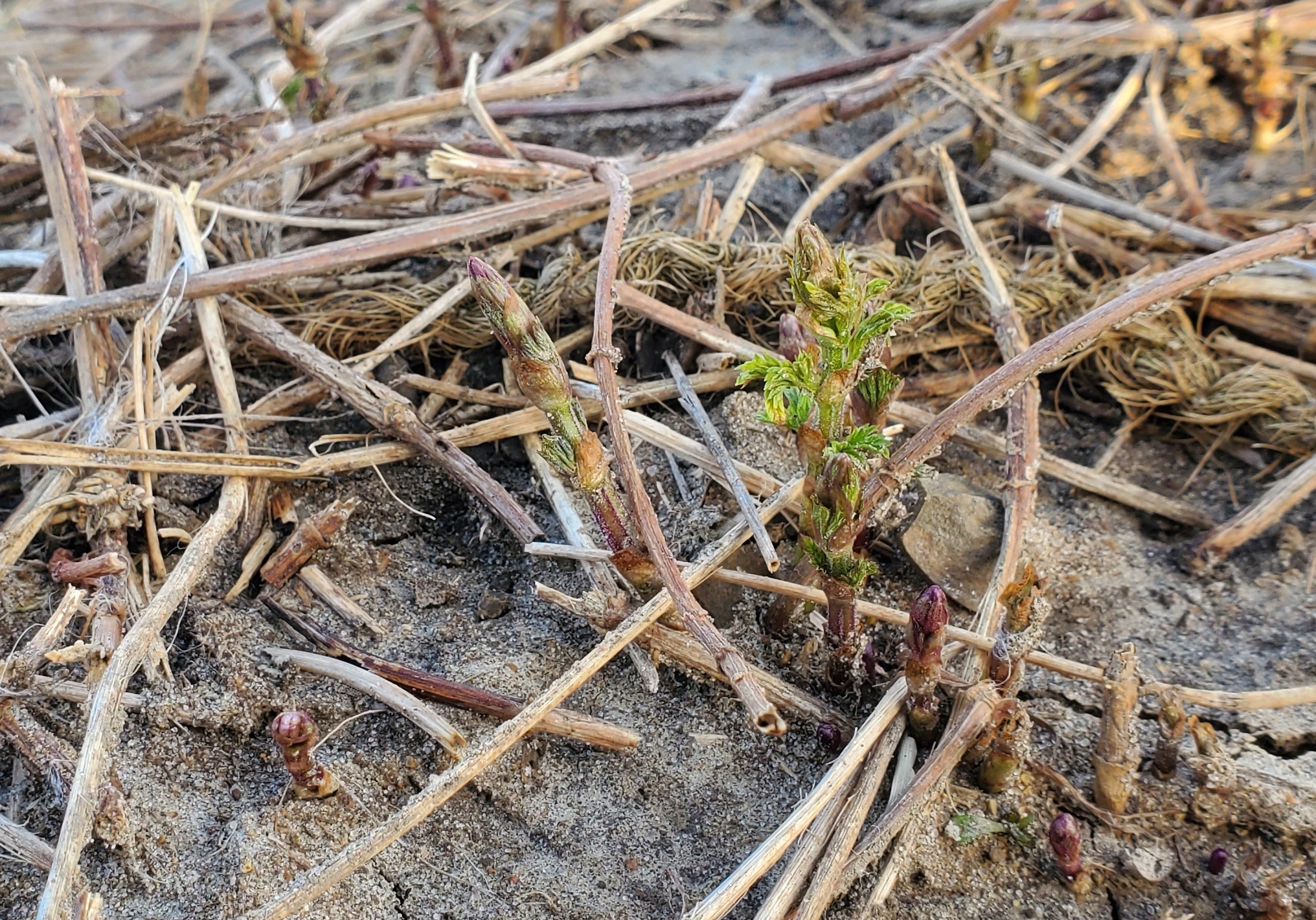Southwest Michigan fruit update – April 11, 2023
And we’re off! The first crop blooms of the year have been seen. Apricots have started blooming. Other stone fruit are not far behind, especially with the warm weather forecast this week.

Weather
Last week was warm. The week started with high temperatures near 60 Fahrenheit. Several waves of storms passed through the area on Wednesday, April 5, bringing the warmest temperatures of the week. Many saw 70 F before the cold front came through. Much of the region saw around 2 inches of rain on Wednesday, the only day this last week to see significant precipitation.
Highs on Thursday were in the upper 40s F. The coldest morning was Friday morning; low 30s F for most of the region. Friday began the gradual increase of temperatures that will continue through much of this week.
The region saw more growing degree days (GDD) last week than the rest of the season so far, 57 GDD base 42 and 27 GDD base 50, respectively. We are currently behind the long-term average but expect to catch up over the next week.
|
Southwest Michigan GDD summary from March 1 – April 10, 2023 |
|||
|
Station |
GDD 42 F |
GDD 45 F |
GDD 50 F |
|
Benton Harbor (SWMREC) |
111 |
74 |
38 |
|
Lawton (Lawton) |
101 |
65 |
33 |
|
Fennville (TNRC) |
81 |
51 |
24 |
|
Average for the SW region |
103 |
68 |
34 |
|
Average last week |
46 |
24 |
7 |
The forecast for the upcoming week is for even warmer temperatures. Every day is expected to be close to 70 F with no rain until the weekend. A storm system will enter the area on Saturday ahead of a cold front that will bring temperatures back down to the mid-50s F on Sunday and into next week.
Tree fruit
Warm temperatures have accelerated tree development over the past week. Soil temperatures at the 4- and 2-inch depths are reaching into the 50s F and 60s F, which is appropriate for Ridomil drenches for Phytopthora crown and collar rot. Temperatures reached into the low 20s F on April 7 in some areas of the southwest, but probably did not result in significant damage. Crop prospects for all tree fruit remains good.
Soils are drying, helping pruning work in sites with heavier soils.
Apricots and aprium fruit buds are first white to full bloom (e.g., Wescot), depending on the variety. Temperatures in the teens would cause significant damage to fruit buds at these stages.
Peach and nectarine fruit buds are at red calyx to early bloom. Pruning is underway in many orchards. Removing mummies in the trees during pruning helps with brown rot management. Low levels of copper also suppress bacterial spot populations. See the Michigan State University Extension Fruit Management Guide for information on copper rates.
Cherries are at green tip for both Montmorency tart cherry and sweet cherry in Berrien County. Discontinue using copper sprays for bacterial canker in cherries once green tissue is present to reduce chances of phytotoxicity.
In plums, Japanese plum fruit buds are very swollen with green tips and approaching tight cluster. Prune out black knot and dispose of the knots by burning or removing them from the orchard. Sanitation is an important step in managing this disease. If this disease is active in your orchard, new knots from last year's infection may show up later in spring. Typically, spray programs for this disease generally start close to bloom when ascospore release increases.
Apple early blooming varieties Zestar, IdaRed and Macintosh are at 0.5-inch green in Berrien County, with other varieties ranging from silver tip to first green tip. Scab sprays will be needed to protect against future rains as green tissue emerges. Several rains in the Allegan County area last week were probably not infection periods because trees were not showing green tissue at the time. Copper sprays can provide early scab control and fire blight suppression. Using copper fungicides can cause damage to green tissue after tight cluster. Protectants are preferred over systemic fungicides at this time of year for scab control.

Pear (Bartlett) fruit buds are exposed and swollen and will be in tight cluster later this week in the south end of the region. Scab management is needed when green tissue is seen.
Small fruit
Grapes are still dormant for most varieties. Marquette buds are swelling at the Southwest Michigan Research and Extension Center. Other varieties are starting to see sap movement. Dormant pruning is ending in most locations. Some varieties and locations are still finishing.
Blueberry buds are swollen. Fruit buds are beginning to separate in some early varieties in advanced locations. Growers still have time to apply copper, Sulforix or lime sulfur products to suppress early season diseases.
Strawberries have greened up and new leaves are starting to emerge from the crown. Overwintering mulches should be removed and raked between the rows. Some growers are putting out floating row covers. Growers are looking at early season herbicides to control overwintering weeds. When selecting an herbicide, make sure and check the pre-harvest interval (PHI). We are getting to the part of spring where some herbicide PHIs are cutting it close to predicted harvest dates.
Brambles: Buds have separated from the cane and are starting to open. Dormant pruning is ending. In summer bearing raspberries, last year’s primocanes should be headed (cut back) to the desired height and any remaining floricanes from last year should be removed. Fall bearing raspberries should be cut or mowed to the ground. Lime sulfur treatments for anthracnose can still be applied.

Currants and gooseberries continue to green up. Leaves are emerging and starting to unfurl in some locations.
Hops have started to move. One- to 2-inch shoots can be seen. Leaves are starting to open up on the most advanced shoots.

Upcoming meetings
Our regular southwest Monday fruit IPM updates will once again be a hybrid format. The meetings will be held in-person with virtual attending also available online. Our first meeting was Monday, April 10, at 5:30 p.m. and will continue through the rest of the season. You need to register to receive the Zoom link and password for these meetings. The webinars are free and one pesticide applicator credit is available for each meeting. The same Zoom link will be used with all the Monday meetings—you only need to register once. Before the meeting, Cheyenne Sloan will have fruit spray guides for sale on April 21 and will have forms available for tax-exempt individuals for receiving a reduced price.
This work is supported by the Crop Protection and Pest Management Program [grant no 2021-70006-35450] from the USDA National Institute of Food and Agriculture. Any opinions, findings, conclusions, or recommendations expressed in this publication are those of the author(s) and do not necessarily reflect the view of the U.S. Department of Agriculture.



 Print
Print Email
Email
